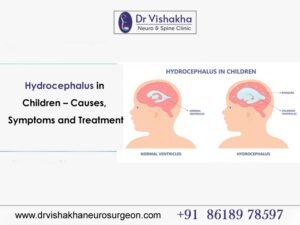Craniosynostosis in children: A serious condition?
Craniosynostosis is a severe condition in children that affects skull and brain development. It occurs when one or more of the skull sutures, fibrous joints connecting skull bones, close prematurely, preventing normal development. Potential sequelae include facial bone alterations, cranial dysmorphology, and increased intracranial pressure. In severe cases, it can cause brain damage, developmental delays, blindness, and even death if left untreated. The severity of the condition varies depending on whether it affects a single or multiple sutures and whether it is associated with a genetic syndrome. Early diagnosis and timely surgical intervention are crucial to prevent long-term complications. Craniosynostosis can cause sagittal synostosis, coronal synostosis, metopic synostosis, and lambdoid synostosis, as well as vision and hearing problems. The risk of increased intracranial pressure (ICP) is significant, with symptoms including headaches, vomiting, irritability, sleep disturbances, and vision problems. The condition can be categorized into non-syndromic and syndromic cases, with some isolated and others linked to genetic syndromes.
Surgeon’s Input for Craniosynostosis Procedures
Craniosynostosis is a condition characterized by raised intracranial pressure (ICP) and associated syndromic features. Diagnosis involves a clinical examination, including assessing skull shape, palpating for suture ridges, and checking for symptoms of raised ICP. Imaging studies, such as X-rays, CT scans, MRIs, and genetic testing, can help identify fused sutures and evaluate skull deformity.
Treatment options include surgical interventions, such as Minimally Invasive Surgery (Endoscopic Strip Craniectomy) for infants under 6 months, Open Cranial Vault Remodeling (CVR) for older infants or cases with significant skull deformities, and Spring-Assisted Surgery for some cases of sagittal synostosis. Non-surgical management includes Helmet Therapy, observation, and monitoring.
Postoperative care and follow-ups include hospital stays, pain management, head elevation, swelling monitoring, and regular follow-ups to track skull growth and neurodevelopment. Developmental assessments may be necessary if developmental delays are suspected.
Surgical risks include bleeding, infection, and anesthesia-related complications. Recurrence of Craniosynostosis is rare but possible, requiring additional intervention. Untreated cases may lead to increased ICP, cognitive impairments, and long-term neurological complications.
Parents should be educated about craniosynostosis, available treatment options, and expected outcomes, address concerns regarding skull and facial aesthetics, cognitive development, and potential future procedures, and offer psychological support.
If you notice any signs of craniosynostosis, such as an abnormal head shape, ridging, or slow head growth, you must see a doctor right away. Early detection and treatment can significantly improve outcomes for children with craniosynostosis. Craniosynostosis is a difficult condition that necessitates careful diagnosis, careful treatment planning, and surgical intervention. As a surgeon, it’s essential to stay up-to-date with the latest techniques, technologies, and best practices to ensure optimal outcomes for children with craniosynostosis. Craniosynostosis is a serious condition that requires early diagnosis and appropriate surgical intervention to prevent complications. A multidisciplinary team, including pediatric neurosurgeons, craniofacial surgeons, geneticists, and rehabilitation specialists, plays a crucial role in treatment and long-term care. Most children with craniosynostosis develop their skulls and brains normally with prompt treatment, which improves their functional and cosmetic outcomes.
About Dr Vishakha :
Dr Vishakha Basavraj Karpe is a highly skilled senior consultant at Rainbow Children’s Hospital in Banjara Hills and Hydernagar Hyderabad. She is known for her comprehensive care approach and is one of the few dedicated leading paediatric neurosurgeons in the city and India with over ten years of extensive experience in pediatric neurosurgery. Her expertise includes treating hydrocephalus, spinal dysraphism, craniosynostosis, paediatric brain infections, brain and spine tumours and stroke surgery. She has a special interest in craniosynostosis surgery, which is done only in very few centres in India.
Proficiency of Dr Vishakha:
-
- Hydrocephalus (increased fluid in the brain): The procedure involves an endoscopic third ventriculostomy and CSF diversion (VP shunt) to treat complex hydrocephalus.
- Craniosynostosis (abnormal head shape due to untimely cranial sutures fusion) surgeries: Helmet therapy is a technique that is used in both endoscopic and open surgery.
- Spinal dysraphisms(Spina Bifida)- (spinal abnormalities present by birth) – surgical repair
- Encepahaocles repair surgery.
-
- Vascular conditions and stroke surgeries: revascularization surgeries for moya moya disease.
- Pediatric brain and spine tumour surgeries.
-
- Pediatric brain and spine infection surgeries: Endoscopic and open surgeries for brain and spine infections.
- Pediatric traumatic brain and spinal injury.
- Antenatal counselling for congenital fatal neurosurgical conditions.





